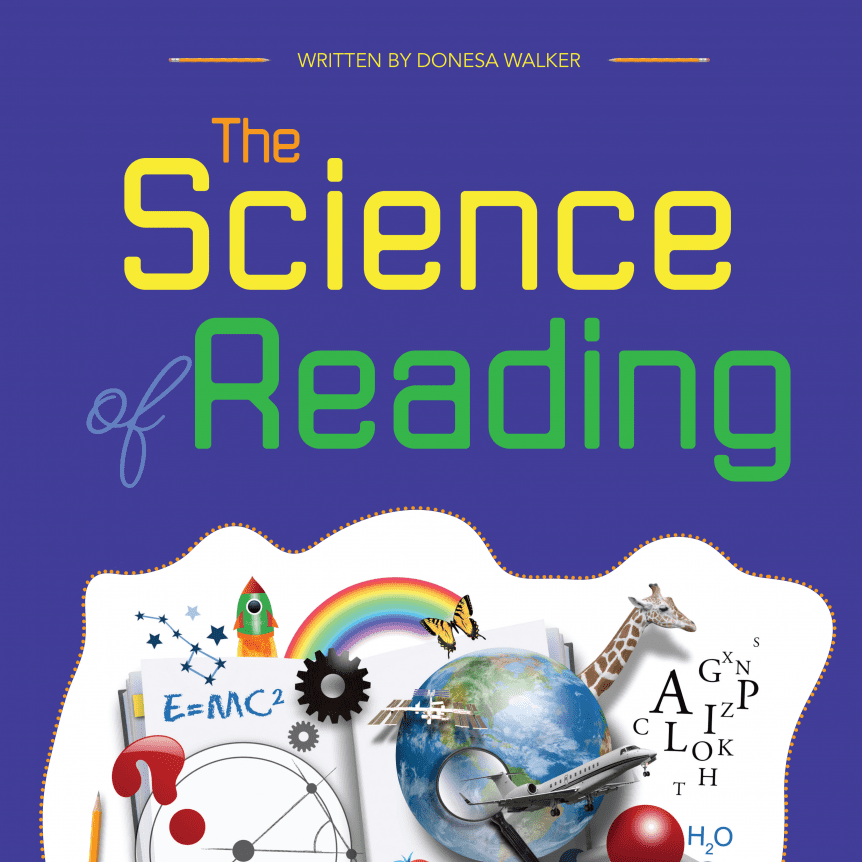By Donesa Walker, M.Ed. BCCS, Reading/Dyslexia Specialist
Learning to read” and “reading to learn” are phrases that we have heard for a very long time in education and publicly when discussing reading. However, as with everything, the basics behind the reading process are what is so important to know and understand. In the last couple of years, we have looked for details behind the science and I am happy to report that finally, those in the field of education are now learning more about the science of reading. So, what does that mean anyway? Let’s discuss the cognitive skills behind the reading process and why reading is not a natural phenomenon but rather a learned skill that quantifies the ability of the reader. Since reading affects every aspect of our lives each day it is a necessary skill for survival. Now, let’s dive into the science.
A letter is a symbol that represents a sound and when certain symbols (letters) are combined or arranged into a specific code, it represents other sounds. A spoken word evokes a picture in the brain which allows meaning to be attached to that word.
For super ease of expression, we are going to use the word CAT. When someone says the word cat, we can picture a cat in our brain but perhaps you do not realize that the cat you picture is the one you most recently or most often linked with that word. Your spouse, child, student or friend would likely describe the word cat quite differently than you do based on their own “schema” or memory experiences with the word/animal cat. The more experiences and touchpoints to the word cat, the bigger your brain memory file is on that particular word and the more adaptability you have to accept new concepts or links to that word. And this is all just when someone says the word…this pictorial representation of the word cat happens in the visual processing part of the brain and those that are weak in this cognitive skill may struggle to connect the word to the pictorial representation. This can happen for students with visual processing issues such as visual dyslexia, as well as, those with traumatic brain injury due to illnesses such as COVID, PANDAS, brain trauma from accidents, strokes or dementia, as well as other circumstances. The speed at which one processes this information is also a critical cognitive skill that affects thinking and reading. If the uplink to processing is slowed by trauma, damage or weakness, this affects the overall function. When someone speaks a word to us, we must use a minimum of 4-5 cognitive skills to process that word for meaning and that is before we add the complexity of the reading code in the English language.
Let’s dive deeper. The letter C doesn’t say C like an S when it is read but rather “c” like a k and the letter A in the word cat doesn’t say A like its symbol name either, instead it says a short vowel sound “a” and finally we have the T, that thankfully usually says “t” like the beginning of its name. WOW! That’s a lot for a three-letter word. Then one must blend the sounds together and link them in an orthographic picture to associate with the creature that has four legs, a tail, usually lives in a home with humans and meows. But I digress. I wanted you to understand that the process of reading has no simplicity to it at all but rather is a complex process of coding much like a computer must code the words that I type.
Let’s simplify this discussion and get back to the science. With a plethora of research over the last 20 plus years, educators and cognitive scientists have discovered that there are many types of learning issues involved in the process of reading and the best way to teach reading is through a direct, systematic, structured approach that includes phonemic awareness, phonics, spelling and high-frequency words that follow exceptions to the code patterns. In 1986, Gough & Turner put reading into a simple formula view: D (decoding) x LC (linguistic comprehension)= RC (reading comprehension).
For simplicity, teaching explicitly to decode (including phonological awareness, letter-sound correspondence, and sight recognition) multiplied with LC (background knowledge, vocabulary, language structure, verbal reasoning, and literacy knowledge) weaves together into a strong ability to read. So this is why the cognitive skill function is critical to the process. If one struggles with memory then there is little to hold onto the codes and complexities. If one struggles with processing speed, then the person cannot think fast enough to process all of the different parts of the process efficiently. If the person struggles with auditory processing, then they may struggle to connect the code correctly to the sound. If they struggle with visual processing, then they are challenged with linking the orthographic representation to the sounds and/or the pictorial meaning. If one struggles with attention, then all of this can be challenged.
It is critical that we know how our brains and our cognitive skills are functioning. This is why cognitive testing is important at an early age and should be done regularly so that any changes can be monitored. It is easy as a parent to understand the concept of getting our eyes checked and our teeth checked so we should understand the concept of getting our thinking skills checked. Intervention is possible and is so effective with brain training at any age. The younger you start testing, the less of the struggle the student goes through and it is always easier to teach something right the first time than to retrain and unlearn compensatory skills. Brain training is truly life-changing for many. Reading is a process but it can be learned at any age. With proper intervention, it can open up a life of adventures and possibilities.

